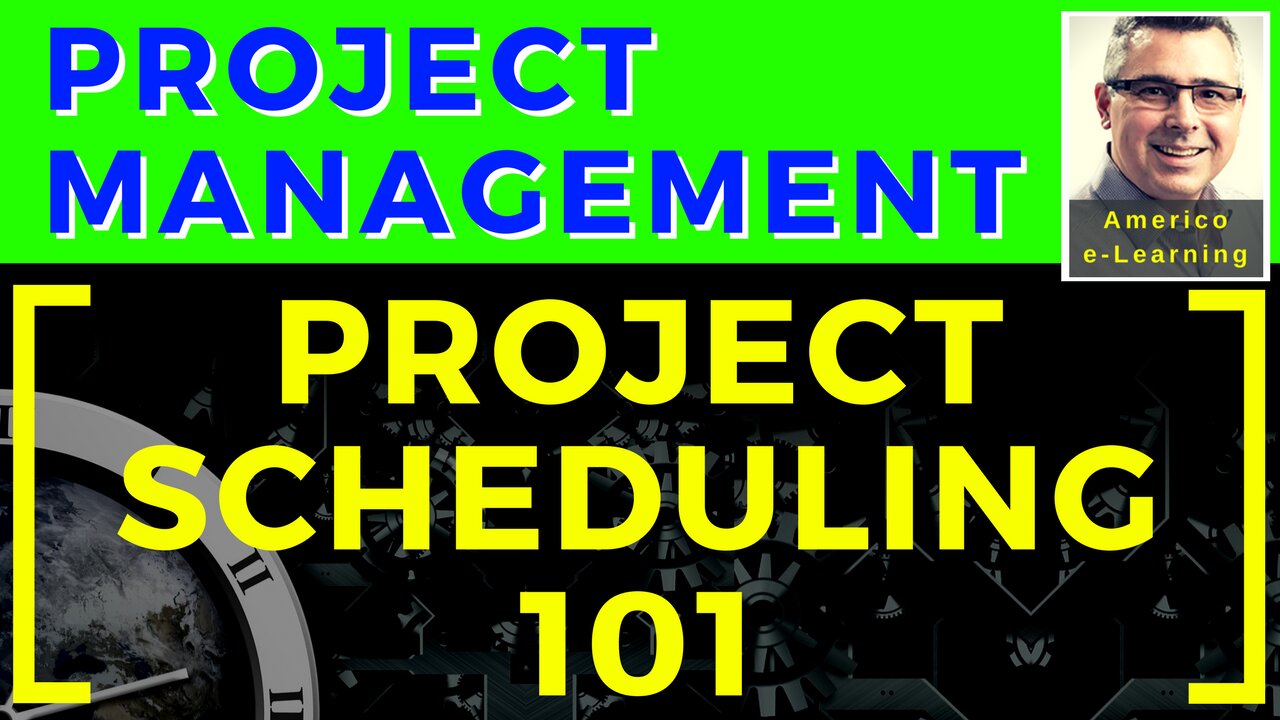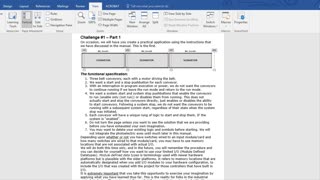Premium Only Content

Learn the 4 steps for project scheduling. Get a Job in Project Management by Americo Cunha, Ph.D.
In this video, we present a visual tutorial on project management scheduling. You learn how to prepare a project schedule visually.
This 101 course teaches the four steps for an effective project scheduling are:
(1) How to identify project tasks
(2) How to estimate project duration, resources, and cost
(3) How to arrange project activities in sequence
(4) How to optimize project schedule
After, you will be able to understand the PMBOK and other project management technical books better.
Here is the place to improve your project management skills.
Project planning is an art of anticipation!
Yes, the act of preparing for something, the visualization of future events.
(1) Identify project tasks
The project tasks can be identified and organized with the support of a tool called WBS - WORK BREAKDOWN STRUCTURE
In the WBS, we organize tasks into manageable groups, by project phases, deliverables, subject matter...
The WBS - - WORK BREAKDOWN STRUCTURE is like an assembling kit diagram from which you can develop your project plan. In the first level, you have the main sections, main work phases, or deceivable .
These project sections are then further broken down into tasks, or work packages, that can be assigned to a single person to handle. In WBS chart, these are the lowest level, the smallest project units in which all planning will be developed.
(2) Estimate task duration, resources, and cost
Time and resources estimates are a big part of the schedule because they help determine how long tasks should take.
Each task of the WBS lowest level are evaluated. For each one, first, we try to estimate the effort, work-hours that will take to finish the task.
The estimating is very critical to the project. Try to get advice from experienced people on the job and check actual duration from previous projects.
Two things should be taken in consideration to determine the task duration the effort, work-hours, and resource availability. For instance, the project should understand if the person in charge for a task will be working full or part-time. Full time dedication lead to a shorter duration.
(3) Arrange tasks in sequence
Putting tasks in a logical work sequence is the next challenge to developing the project schedule.
The first challenge is to find out the relationships between tasks, and identify which task must be done before the other task. This is called task dependencies. If a task has to be done before another, it is called predecessor.
After, it is time to determine the possible start date for each task. This can be done by computing ti mes on the project network. The project network technique Precedence Diagramming Method - PDM allows us to define the starting, finishing times for each activity, total project duration, and the critical path. The critical path is the shortest period in which the project can be completed.
After the time calculation, we can find a better way to show the task times. The most common way is the Gantt Chart.
The Gantt Chart illustrates the start and finish times, or dates, for each task in a type of bar chart. It is like a project calendar. Each task has a bar drawn between its start and finish dates.
The fourth scheduling step, it's when we try to optimize project schedule.
The three most important optimization strategies are:
- Balancing workload is the activity to make sure each team member has a realistic work-hours planned in a period.
- Then, it is always important to verify if we can reduce the project duration. You can try to allocate extra resource for the tasks in the critical path; a method called project crashing. Or try to overlap execution of some tasks, what is called fast tracking.
- Third, evaluate the significant execution risks, and maybe accommodate buffers between tasks.
So, the project starts with an idea, sometimes not well defined.
In the project chart, the idea became more apparent; it is better outlined.
During the planning, the project team work on the idea, define the scope, project boundaries.
The project is divided into logical pieces, sections, until well-defined tasks or work packages.
The planning is developed based on the tasks. For each task, durations, resources, costs, sequence, risks are defined.
Project team works in each task according to the schedule.
In the end, the project product is delivered, hopefully, according to the client's initial idea.
MY SOCIAL MEDIA AND CONTACT MEDIA
YOUTUBE CHANNEL: www.youtube.com/c/americoelearning
E-MAIL: [email protected]
WEBSITE: www.americoelearning.com
TWITTER: @AmericoBC
TWITTER WEBSITE: https://twitter.com/AmericoBC
LINKEDIN: https://ca.linkedin.com/in/americobc
MISSION STATEMENT
My mission is to provide practical courses in business analysis for effective professionals. The objective is to keep the focus on the essential needs of professionals that work within short due dates and under pressure.
-
 1:50
1:50
WFTS
4 years agoStudents learn journalism with Scripps News Literacy Project
8 -
 2:27
2:27
Rockgardens
4 years ago $0.01 earnedRockGardens, Project #1. Fixing Concrete Steps
91 -
 41:26
41:26
B0-38 RSLogix500-MicroStarter-Micrologix
4 years agoB9 - Learn PLC RSLogix500 - Challenge Project 1 - PLC Professor
22 -
 4:09
4:09
KGTV
4 years agoNews literacy project
77 -
 38:54
38:54
The Database Channel
4 years ago $1.70 earnedDatabase project preliminaries
1.16K -
 4:04
4:04
WMAR
4 years agoThe Mustache Project
69 -
 3:11
3:11
Throwingbull
4 years ago $0.01 earnedHousing Project Demolition
174 -
 0:08
0:08
speedskater
4 years agosmall project I did
57 -
 1:22:33
1:22:33
Dialogue works
1 day ago $12.43 earnedScott Ritter: Putin Warns Europe: “We’re Ready Right Now”
78.5K61 -
 13:14
13:14
itsSeanDaniel
2 days agoIlhan Omar EXPOSED for LYING about Somalian Fraud
22.7K37